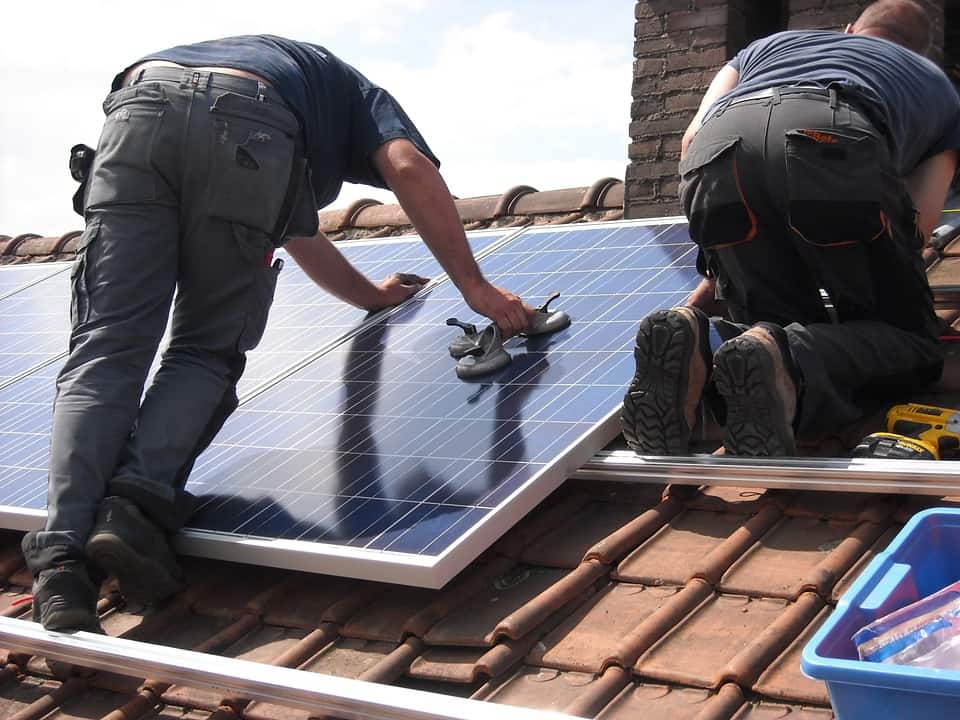When you glance at rising utility bills and relentless climate headlines, you probably ask whether your roof could help. Solar isn’t just a flashy tech upgrade; it’s a practical change in how you connect with the planet.
When you explore home solar panels, you’ll notice the environmental perks add up—quiet power, fewer emissions, a lighter carbon footprint. Let’s talk about why more homeowners, possibly including you, are making the switch.
Solar’s Ecological Advantages
Solar power isn’t just trendy; it’s a game-changer for anyone eager to shrink household pollution. By tapping sunshine, you sidestep fossil fuels and protect ecosystems.
The sun as an endless resource
Because sunlight arrives free daily, your roof becomes a private power plant. EnergySage estimates one hour of sunshine could satisfy humanity’s needs for a year.
Minimal operational impact
Once installed, panels sit there, silently converting photons into power. They emit zero exhaust, use no moving parts, and disturb neither soil, streams, nor peace.
Rapid payback on energy
The energy spent making modern modules is recouped in roughly three years, meaning every kilowatt-hour generated afterward represents pure, net-positive, carbon-free environmental gain for households.
Cutting Carbon Footprints
Slashing your household’s carbon footprint used to mean complicated lifestyle changes; swapping grid electricity for solar is a faster shortcut that keeps CO? out.
- Massive offsets: Each installed kilowatt displaces coal or gas power, saving roughly 0.9 metric tons of carbon annually, multiplying over decades of operation.
- Better than trees: Research from Columbia Climate School shows an acre of panels erases up to 200 times more CO? yearly than the same acre of forest.
- Quick revenge on emissions: Even if panels replaced woodland, embedded carbon is neutralized in two years, after which savings accumulate exponentially.
- Agrivoltaic synergy: Dual-use farms grow crops beneath arrays, letting you harvest vegetables and emissions reductions on the same patch of land.
Replacing fossil energy where you live therefore outperforms many traditional offsets, giving you bragging rights and breathing room while the planet urgently needs both today.
Preserving Water Supplies
Electricity production gobbles water for fuel extraction and plant cooling, yet solar dramatically changes that equation, letting drought-stressed regions keep gallons for farms and drinking.
Invisible water savings
A Duke University analysis calculates rooftop systems can spare the grid roughly 16,000 gallons per home every year, skyrocketing to 53,000 in sun-baked California households.
Why energy equals water
Most thermal plants vaporize rivers for cooling, and fracking injects millions of gallons underground; when you unplug, the demand for that hidden water simply disappears.
Long-term drought insurance
Because solar arrays need only occasional rinsing, your system’s water use is front-loaded during manufacturing, then effectively zero for the following twenty-five desert-dry summers ahead.
Cleaner Local Air Quality
Cleaner air isn’t an abstract statistic; it’s the difference between morning jogs and asthma attacks. Solar curbs the particulates and gases that darken urban skies.
- Immediate neighborhood effects: Generating power on-site eliminates smokestack pollutants like NOx and SO? responsible for smog and respiratory illness.
- Lower healthcare costs: Studies link solar adoption with measurable drops in emergency asthma visits, saving communities millions in medical spending.
- Equity boost: Fewer frontline residents suffer from power-plant pollution, narrowing troubling health gaps between wealthy suburbs and industrial corridors.
- Monitoring made simple: Your utility app shows real-time avoidance of pounds of pollutants, connecting environmental data directly to daily lifestyle choices.
Each kilowatt-hour you produce at home means one less burned elsewhere, turning rooftops into micro-policy tools that steadily reclaim skylines for blue horizons once again.
Advancing Sustainable Lifestyles
Going solar triggers a domino effect of sustainable habits; panels on the roof remind you daily that conservation is possible, practical, and even financially rewarding.
Energy independence mindset
When you’re generating your own power, you naturally start tracking consumption, swapping incandescent bulbs, sealing drafts, and timing appliance use to maximize midday production levels.
Financial feedback loop
Lower utility bills free money for other eco-upgrades—maybe a heat pump or electric vehicle—compounding the original environmental benefit without extra monthly strain on the budget.
Community inspiration
Panels are visible, conversation-sparking billboards. Your decision nudges neighbors, schools, and businesses to explore renewable options, creating positive peer pressure across the entire block today.
Supporting Biodiverse Habitats
Wildlife thrives when energy infrastructure coexists with nature. Thoughtful solar siting and land management can turn panel fields into sanctuaries for bees, birds, and plants.
- Pollinator corridors: Seed mixes under arrays create flowering meadows, boosting honeybee populations and improving yields for surrounding orchards and market gardens.
- Safe cover: Low panel rows offer shade and shelter for small mammals and ground-nesting birds, reducing predation and heat stress.
- Restored soils: Eliminating intensive plowing lets microbial life rebound, locking additional carbon in the ground and preventing erosion.
- Adaptive grazing: Sheep happily munch between modules, maintaining vegetation naturally while farmers earn dual income streams.
By partnering with ecological designers, your solar project can double as habitat restoration, proving clean energy doesn’t have to displace wildlife—it can actively support it.
Mitigating Climate Change
Scientists agree we must halve global emissions this decade, and decarbonizing electricity is the quickest lever. Rooftop solar lets you personally move that critical needle.
Cheapest mitigation pathway
Reports from Ember show wind and solar already undercut fossil fuels on cost, saving consumers billions while slashing carbon—proof climate solutions needn’t be expensive anymore.
Electrify everything bridge
As cars, heaters, and factories switch to electricity, clean generation must scale rapidly. Rooftop arrays supply zero-carbon electrons precisely where future demand will surge most.
Resilience against setbacks
Distributed solar networks dilute climate risks; a wildfire may damage transmission lines, yet your panels keep running, reducing blackouts that make heat waves and storms deadlier.
Lifetime Emission Reductions
Over its lifetime, a typical home system prevents more than 150,000 pounds of CO? from entering the atmosphere, dwarfing the emissions created during manufacturing processes.
Lifecycle calculations
The IPCC pegs rooftop solar at forty-one grams CO? per kilowatt-hour produced; gas produces twelve times, coal twenty times, illustrating dramatic cradle-to-grave advantages for households.
Payback in three years
Because embedded emissions are offset quickly, everything after year three is atmospheric savings, effectively turning your rooftop into a long-term carbon bank for the planet.
Even greener tomorrow
Manufacturers are adopting recycled silicon and renewable-powered factories, meaning panels you buy next year will arrive with an even slimmer carbon footprint than today’s versions.
Choose Wisely
By examining solar’s ecological impacts, you see how panels shrink carbon footprints, save water, improve air, and buffer ecosystems against climate change. Your energy decisions echo beyond your roof, affecting neighborhoods and habitats for decades. Weigh these tangible outcomes and decide whether your power source matches your environmental values today.


